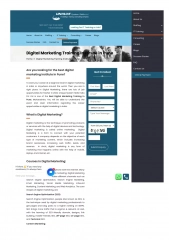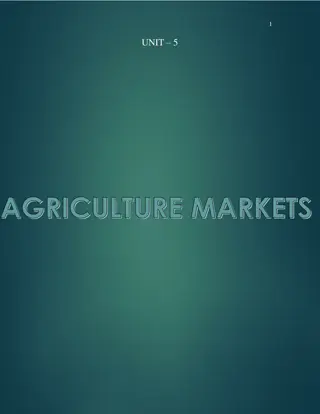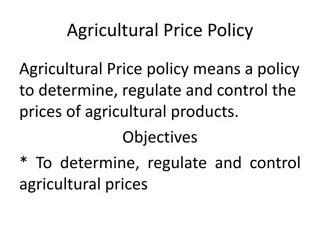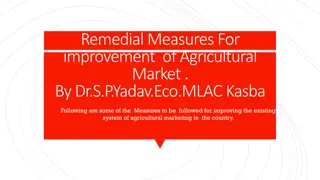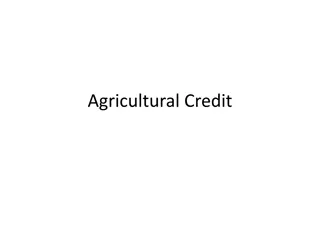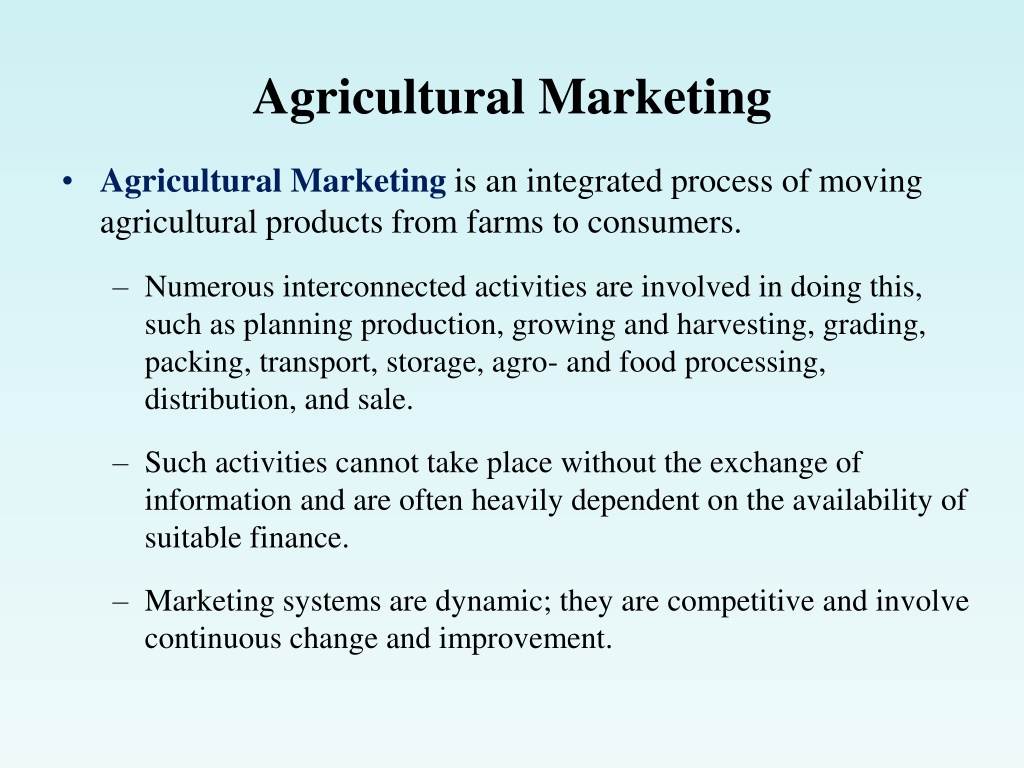
Understanding Agricultural Marketing and Its Importance
Agricultural marketing is a dynamic process encompassing various interconnected activities to move agricultural products from farms to consumers. Efficient marketing systems impact consumer prices and farmer revenues significantly. Explore the macro and micro views of agricultural marketing, along with key functions and approaches in the industry.
Download Presentation

Please find below an Image/Link to download the presentation.
The content on the website is provided AS IS for your information and personal use only. It may not be sold, licensed, or shared on other websites without obtaining consent from the author. If you encounter any issues during the download, it is possible that the publisher has removed the file from their server.
You are allowed to download the files provided on this website for personal or commercial use, subject to the condition that they are used lawfully. All files are the property of their respective owners.
The content on the website is provided AS IS for your information and personal use only. It may not be sold, licensed, or shared on other websites without obtaining consent from the author.
E N D
Presentation Transcript
Agricultural Marketing Agricultural Marketing is an integrated process of moving agricultural products from farms to consumers. Numerous interconnected activities are involved in doing this, such as planning production, growing and harvesting, grading, packing, transport, storage, agro- and food processing, distribution, and sale. Such activities cannot take place without the exchange of information and are often heavily dependent on the availability of suitable finance. Marketing systems are dynamic; they are competitive and involve continuous change and improvement.
Agricultural Marketing Every person in the world is affected, on a daily basis, by the way agricultural markets provide alternative quantities and qualities of various food for consumption. The efficiency with which all of these activities occur affects prices that consumers pay for the food they purchase as well as the prices that farmers receive for their products. Less than 2% of the US population reside on farms and obtain income directly from producing agricultural products. A much larger fraction of the US population depends on marketing of agricultural products as a major source of income.
Consumer Food Expenditure Marketing Bill 100% = 82% Farm Value + 18% Source: USDA, 2008
Views of Ag. Marketing The MACRO view Macro marketing is the performance of all business activities involved in the forward flow of goods and services from the producer to the consumer. The WHO and WHAT of Marketing The MICRO View Micro marketing is the performance of business activities that direct the flow of goods and services to the customer and accomplish the objective of the firm. The HOW and WHY of Marketing
Macro view: Three approaches to the study of marketing agricultural products 1. Institutional Approach: Emphasizes the Who of marketing Middlemen assemblers, wholesalers, brokers, retailers, order buyers, information providers, etc. 2. Functional Approach: Emphasizes the What of marketing Functions that are performed in agricultural marketing exchange functions, physical functions and facilitating functions 3. Behavioral Approach: Emphasizes the interdependence and coordination of all participants and all the functions of the entire system combines institutional and functional approaches
Functions in Agricultural Markets one way to analyze Selling Storage Transportation Processing Facilitating Standardization Financing Risk bearing Market Intelligence
Selling to Processors For final products (e.g., flour) For manufacturing of ingredients Intermediaries Wholesalers Retailers Customers Consumers Institutions
Storage Storage Seasonal Timing of production vs. cost of storage Feasibility of timing market (turkeys vs. wheat) Queuing
Transportation Cost vs. speed Perishability Value of freshness to customers Ability to predict demand Need for bulk reduction (see processing)
Processing Treatment of product (e.g., wheat to flour) Reduction of bulk (oranges to concentrate not orange juice yet) Creation of labor saving food products (e.g., frozen pizza)
Facilitating Farmers agents Matching demand and supply Other information search e.g., demand forecast Negotiations Logistics handling
Standardization Agricultural grades and labeling Food branding
Financing Long term lending Farm mortgages Equipment loans Short term lending Advances against harvests Financing of store and processor inventory Futures contracts
Risk Bearing Futures contracts Investments in new food products (most will fail) Evaluation of credit worthiness of farmers and other parties
Market Intelligence Market research Forecasting Demand For existing products Spread of new products Supply
Behavioral Systems Input-output Different parties provide goods and services moving toward final products Communications Matching supply and demand Adaptation to outside changes e.g., Consumer tastes World supply
Micro Marketing From a micro, firm manager perspective, the customer is the next stage in the marketing system. What does this mean? The firm manager will play an active role in overseeing the firm s marketing decisions that include: Procurements and merchandising (buying and selling) Identify consumer preference and product choice Product design and development, processing, and packaging Pricing Promotion Storage and transportation
Consumer Sovereignty The economic doctrine that the consumer is Queen or King in the marketplace that is driven by consumer demand is known as Consumer Sovereignty. This is the concept that each consumer decides independently what to buy and that the combined individual decisions directs all production and marketing activities in the economy. But consumer demand is influenced by effective Advertising and Promotions




